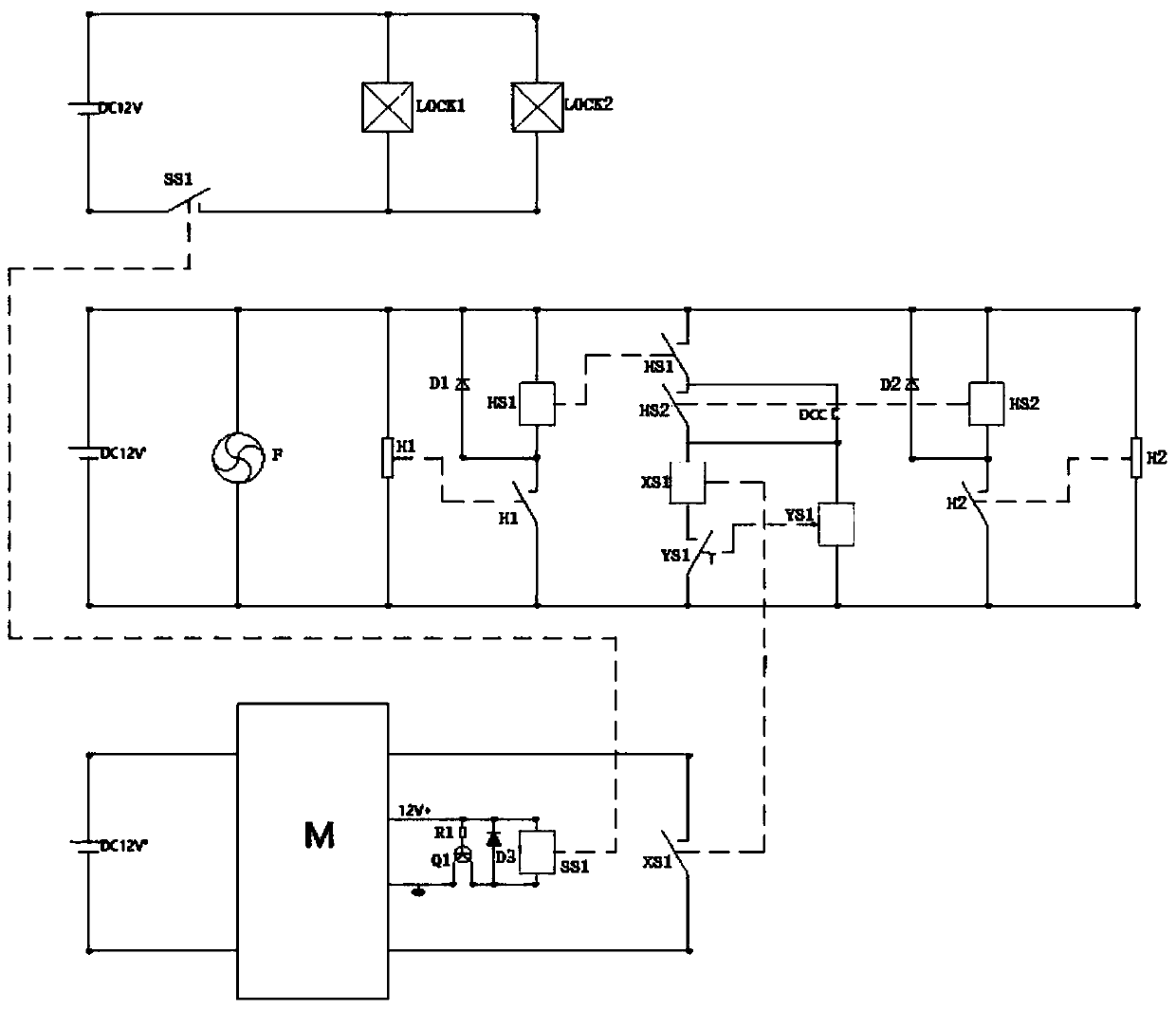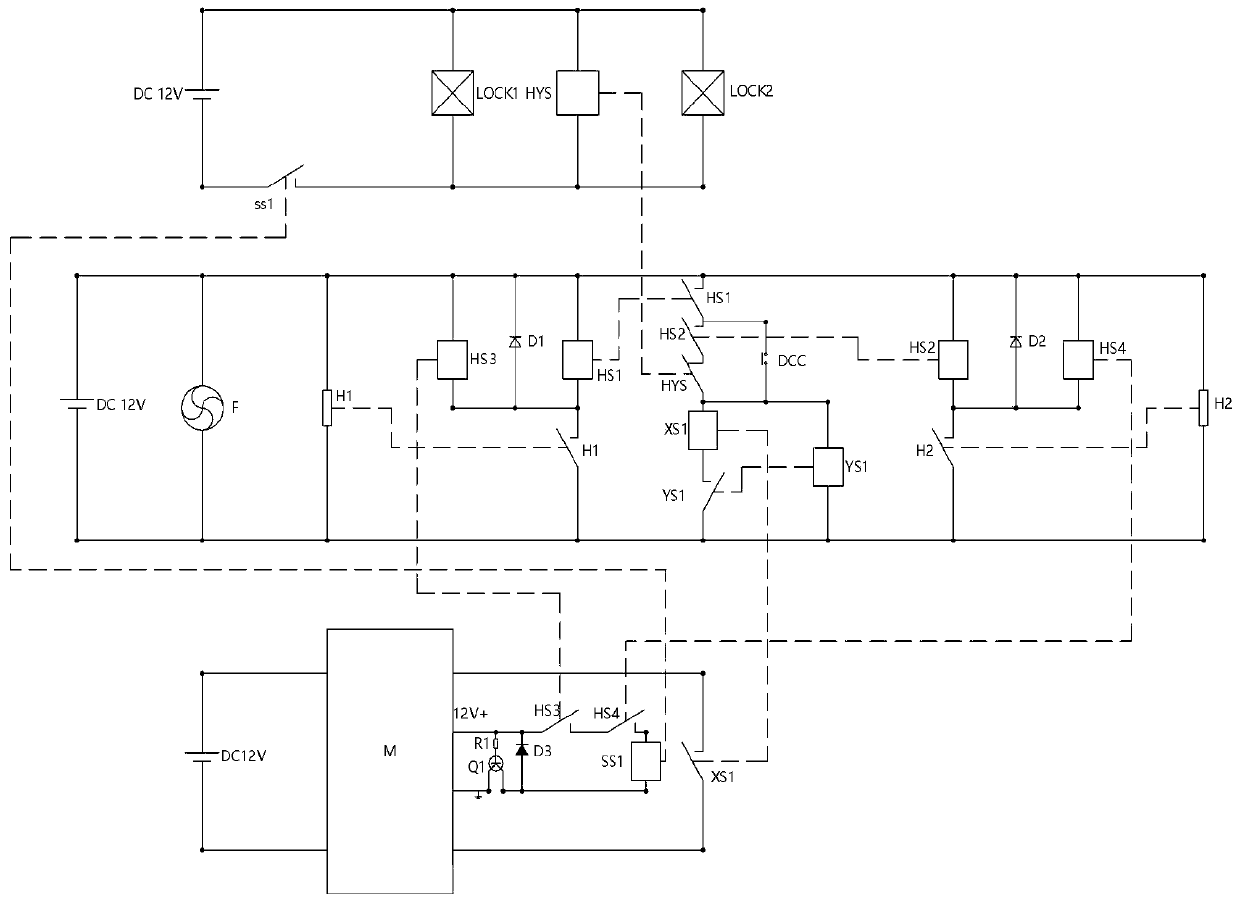Door state detection circuit of access control system
An access control system and detection circuit technology, which is applied in the security field, can solve problems such as static detection schemes and inability to meet the needs of remote door state control, and achieve the effect of accurate state information
- Summary
- Abstract
- Description
- Claims
- Application Information
AI Technical Summary
Problems solved by technology
Method used
Image
Examples
Embodiment 1
[0028] A door state detection circuit of an access control system mainly detects the state of access control in which two doors are cooperatively closed. Therefore, each door is corresponding to detection elements, which are respectively detection element H1 and detection element H2. The detection element H1 and the detection element H2 are used to signal that the door is closed. The detection element H1 and the detection element H2 are Hall elements. Hall elements are used to detect this action of the door being pushed open.
[0029] The door state detection system includes the above-mentioned detection element H1 and detection element H2. The door locks are door lock LOCK1 and door lock LOCK2 respectively.
[0030] The power supply DC1 is connected to the positive and negative poles of the door lock LOCK1 and the door lock LOCK2, and the power supply DC is provided with a contact of the relay SS1 on the connection line with the door lock LOCK1 and the door lock LOCK2. It ...
Embodiment 2
[0043] The difference between this embodiment and Embodiment 1 is that, in order to make this access control detection system also adaptable to the use of a single door leaf, therefore, this embodiment adds a cut-off terminal DCC on the basis of the above-mentioned embodiment 1. This cut-off terminal DCC can be realized with switching elements.
[0044] Specifically, the cut-off terminal DCC is arranged between the other end of the contact of the relay HS1 and the other end of the contact of the relay HS2.
[0045] When there are two doors, the cut-off end is disconnected, and the principle is used as described in embodiment 1 at this moment.
[0046] When there is only one door, the cut-off end is closed. Specifically, for example, when there is only one door, the detection element H2 cannot detect the signal. At this time, the relay HS2 coil is not charged, and the relay HS2 contact is not closed. At this time, due to The cut-off end DCC is turned on, therefore, the other e...
Embodiment 3
[0048] The difference between this embodiment and Embodiment 1 and Embodiment 2 is that the types of door locks targeted by Embodiment 1 and Embodiment 2 are that after pressing the switch and unlocking the door, the door must be pushed open, and the door will return after the push action. position, the door will lock itself.
[0049] In this embodiment, the door lock is an existing new type of automatic door lock, that is, after the door lock is opened, even if there is no action of pushing the door, the door lock will automatically lock again after a certain period of time. Therefore, in this embodiment, adding The delay relay HYS. The two ends of the coil of the delay relay HYS are connected to the positive and negative ends of the above-mentioned power supply DC1, that is, the coil of the delay relay HYS is connected in parallel with the door lock LOCK1 and the door lock LOCK2.
[0050] Further, in this embodiment, the contacts of the delay relay HYS are connected between...
PUM
 Login to View More
Login to View More Abstract
Description
Claims
Application Information
 Login to View More
Login to View More - R&D
- Intellectual Property
- Life Sciences
- Materials
- Tech Scout
- Unparalleled Data Quality
- Higher Quality Content
- 60% Fewer Hallucinations
Browse by: Latest US Patents, China's latest patents, Technical Efficacy Thesaurus, Application Domain, Technology Topic, Popular Technical Reports.
© 2025 PatSnap. All rights reserved.Legal|Privacy policy|Modern Slavery Act Transparency Statement|Sitemap|About US| Contact US: help@patsnap.com


